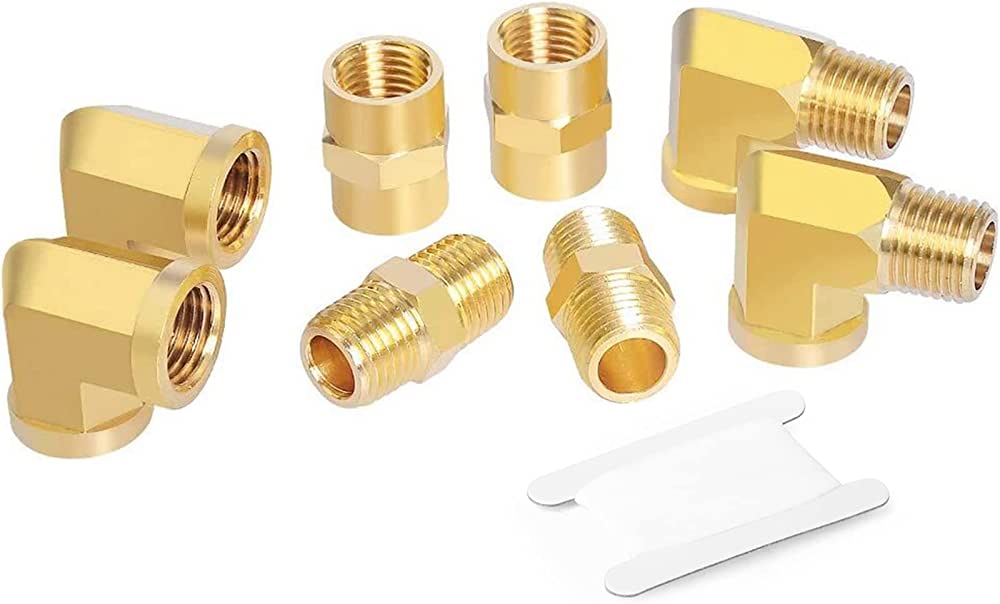How To Use Brass Fittings Properly With Lead Flange Adapters?

In the water utility industry, various fittings are used to adapt older pipes to newer systems. Threaded, compression, and flared fittings are common connection types. However, it’s crucial to understand how to properly connect pipes to these fittings to ensure a secure fit under pressure and over time. This blog post will provide insights into the proper use of the most common fitting types: threaded, compression and flare fittings. We will also highlight the significance of lead flange adapters and the importance of selecting high-quality brass fittings, components, and products, including those made from recycled brass scrap.
Threaded Connections
Threaded connections are extensively utilized in various applications, including water utilities, and are available in male and female variants. These connections offer robust mechanical bonding, ensuring that pipes remain securely in place. When working with brass fittings, it is crucial to establish an effective seal and safeguard against internal corrosion. To achieve it is recommended to apply Teflon tape or pipe joint compound to the male section of the assembly before threading and tightening the female end.
These additional measures guarantee a secure seal, preventing premature failure or corrosion that may complicate future modifications. Opting for high-quality brass fittings and components, particularly those incorporating recycled brass scrap, is imperative to ensure dependable performance and long-term durability.
Compression Fittings
Compression fittings are widely used for connecting copper & plastic pipes. These fittings employ a ferrule, typically made of brass or copper, to create a secure connection. Proper installation techniques are vital to ensure a reliable seal. When working with plastic pipes like PEX, it is important to insert a brass insert to allow the ferrule to compress and form a seal without damaging the pipe.
Using high-quality brass materials for compression fittings is essential. This includes sourcing fittings and components from reputable manufacturers that incorporate brass scrap in their production processes. By doing so, professionals can ensure durable and long-lasting connections that can withstand pressure and time.
Compression fittings offer numerous advantages, including ease of installation and disassembly. They provide reliable and leak-free connections making them suitable for various plumbing applications. When combined with high-quality brass materials, compression fittings deliver dependable performance and longevity.
By following proper installation techniques and selecting top-quality brass compression fittings, professionals can achieve secure connections that meet industry standards. Ensuring the use of quality materials and proper installation techniques is crucial for optimal performance and peace of mind for both installers and end-users.
Flare Fittings
Flare fittings are commonly used in gas and water lines to establish reliable connections. These fittings are created by carefully flaring the end of soft copper pipes or tubing, which is then secured using a nut and fitting. The installation process involves using a flaring tool to create the appropriate flare on the pipe. It is crucial to follow the instructions provided with the flaring tool to ensure a precise & accurate flare.
In order to ensure a secure connection and maintain the integrity of the system, it is highly recommended to use high-quality brass fittings. These fittings are specifically designed to establish a tight seal between the pipe and the fitting, effectively preventing leaks and ensuring optimal performance. Opting for reputable manufacturers that offer reliable brass flare fittings is essential.
When working with flare fittings, it is essential to adhere to proper installation procedures and techniques. This includes selecting the appropriate flaring tool & following the manufacturer’s guidelines meticulously. By doing so, installers can achieve a secure and leak-free connection that meets industry standards and provides peace of mind for both themselves and end-users.
By incorporating high-quality brass flare fittings and following correct installation practices, professionals can ensure the efficient and dependable operation of gas and water systems. Utilizing top-notch materials and adhering to proper procedures contribute to a secure and long-lasting connection, promoting overall system reliability and safety.
Benefits of Lead Flange Adapters
Lead flange adapters offer an efficient solution for transitioning from one pipe type to another without the need for multiple fittings. This saves time during installation and frees up space in tight quarters. When incorporating lead flange adapters, it is crucial to choose brass products made from high-quality materials. This ensures the reliability and durability of the connection by selecting brass fittings, components, and products from reputable manufacturers like Sneh Metal Alloys, water utility professionals can have peace of mind knowing they are using reliable and corrosion-resistant solutions.
Conclusion:
In conclusion, the proper use of brass fittings with lead flange adapters is essential for secure and reliable connections in water utility systems. Understanding threaded, compression, and flare fittings is crucial when working with brass components and products.
Threaded connections provide a strong mechanical bond, and using Teflon tape or pipe joint compound ensures a tight seal and protects against corrosion. Compression fittings, suitable for copper and plastic pipes, rely on brass or copper ferrules and require proper installation techniques. Flare fittings, created by carefully flaring soft copper pipes, require high-quality brass fittings for leak-free connections.
Incorporating lead flange adapters allows for efficient transitions between different pipe types, saving time and space. Choosing brass fittings made from recycled brass scrap ensures reliable performance and corrosion resistance.
Sourcing brass fittings and components from reputable manufacturers like Sneh Metal Alloys guarantees the use of top-quality materials. Following proper installation practices and prioritizing reliable and corrosion-resistant solutions contribute to the longevity and efficiency of water utility systems.
In summary, by utilizing brass fittings, brass scrap, brass components, and brass products along with lead flange adapters, water utility professionals can achieve secure and long-lasting connections. Prioritizing quality materials and proper installation techniques ensures compliance with industry standards and provides peace of mind for all stakeholders involved.

